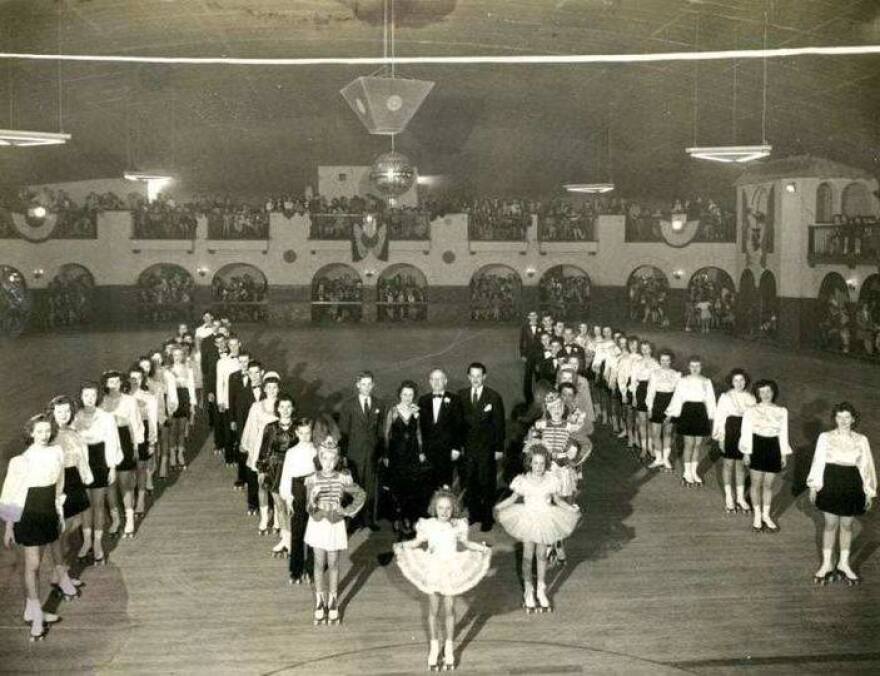The Kansas City Museum at Corinthian Hall is set to reopen Oct. 21 after a nearly seven-year renovation. And programming director Paul Gutierrez is thrilled to finally share the beautifully restored building, exhibits and all the priceless artifacts that will be on display inside.
"It's been a long time coming," says Gutierrez, who describes the museum as a celebration of Kansas City's history, and an inclusive gathering place for people to explore the city's rich cultural heritage.
Of the many artifacts that will be on display, Gutierrez believes Kansas City's El Torreon mirror ball will captivate visitors of all ages.
"It’s eye catching and then all the stories behind it," he says.
Music historian and writer Chuck Haddix says it's a miracle the mirror ball has survived all these years, adding, "Artifacts like the ball connect us to a place in our lives, in our history."
Haddix is also head of the Marr sound archive at UMKC and also host of the KCUR radio show The Fish Fry.
"I think that's why it sparks such an intense emotion in people. They say, 'Oh I remember that.'"
The mirror ball's backstory
Made out of plaster, the mirror ball is almost 3 feet tall, 10 feet around and weighs over 100 pounds.
Fabricated in 1918, it was around long before the "disco era" of the 1970s that popularized mirror balls.

The mirror ball made its debut in December 1927 at the El Torreon Ballroom at 31st and Gillham in Midtown Kansas City.
Haddix says the 1920s was an era filled with a swinging new dance craze. And the El Torreon was a popular spot for young people to meet and dance. It was cheaper than the other ballrooms and had a romantic vibe with Spanish architecture, balconies, and even a machine that projected clouds and stars across the ceiling.
"And the big crystal ball presided over the nightly festivities, from the day it opened," says Haddix.
It hung above the big acts of the day like Phil Baxter and his Texas Tommies and The Alabamians featuring Cab Calloway. It was a party.
But in 1935, because of the Great Depression, the El Torreon Ballroom was closed and converted into a roller skating rink, a spot Chuck Haddix remembers visiting when he was a kid.

"It was a magnificent place, great, great, great roller rink floor," says Haddix. "And it remained until 1970, then it became the Cowtown Ballroom."
In the 1970s, the Cowtown Ballroom was the center of rock 'n' roll life in Kansas City. There was no seating and no air conditioning. It was hot and wild.
The list of bands that played at the Cowtown Ballroom in just the three years it was around is wide ranging and epic.
Frank Zappa, Danny Cox, Linda Ronstadt, Ravi Shankar, Alice Cooper, Canned Heat, Van Morrison, to name just a few.
"They would do benefits for free health care clinic, they did dollar concerts," says Haddix. "A symphony played there, B.B. King played there. It’s amazing just the variety of the bands that played there."
There's a documentary all about it called "Sweet Jesus."
And like a fly on the wall, the mirror ball was there for it all — spinning above — watching it all go down.
After the Cowtown Ballroom closed, the mirror ball was taken down and donated to the Kansas City Museum where it was placed in storage.
The El Torreon's story continued. It became a punk venue in the 1990s, and then a popular flea market spot. It's changed hands over the years and is still a spot to book events.
The resurgence of the mirror ball
Lisa Shockley has worked with the Kansas City Museum on and off for years and remembers the first day she came across the mirror ball in the collection.
"It's like, holy — holy cow! I mean what is this?" she recalls.

The ball had a few loose mirrors and cracks, but otherwise just needed a little dusting and was ready to shine.
Shockley says the mirror ball was loaned for the film "Mr. and Mrs. Bridge," where it made its Hollywood debut. And it had a brief showing at the Union Station Science of Rock exhibit in the 2012. But other than that, it's been packed away.
A big music fan herself, Shockley is thrilled that the mirror ball will have a new home and will shine for the public to enjoy when the Kansas City Museum reopens. To her, it's an artifact that represents Kansas City joy.
"Whether it was a dance or a roller skating rink, it was all about people coming together, socializing, being together and having fun," says Shockley.






